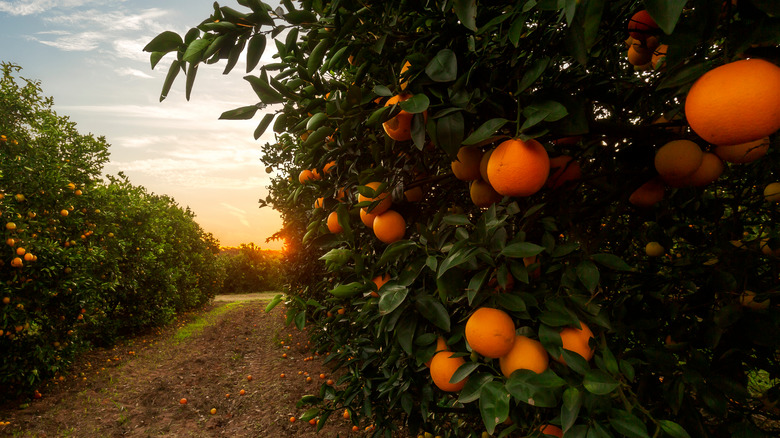The Science Behind Seedless Oranges
There's nothing better than a slice of cool watermelon on a hot Summer's day. There's also nothing more exhausting than having to stop every bite to spit out the seeds — unless you're training for a seed spitting contest, that is. While it's perfectly safe to swallow them down, it's not the most appetizing option.
The same goes for oranges. The bright joy of biting into the citrus fruit can be easily interrupted by chomping down onto an unforeseen seed. Thankfully, there are plenty of seedless varieties out there in the world. Navel oranges and the adorable clementines are among some of the seedless forms of oranges (via Scientific American). Going seedless is great for consumers, but it does beg the question of how these varieties of oranges multiply? Most fruits are spread by their seeds. So, if a fruit doesn't have any seeds then how is it able to reproduce?
Seedless oranges reproduce through tree grafting
The reason for seedless oranges is a process known as parthenocarpy (via Scientific American). This is a phenomenon that sometimes occurs naturally where fruit develops without the need for fertilization. The way that fruit typically grows is egg cells in the ovular compartment of the flower are fertilized by pollen from another tree. Beyond the advantage of providing seedless fruits, parthenocarpy also produces fruit that typically have a longer shelf life as well. So, while seedless fruit might seem like the genius marketing ploy of a corporation it actually comes from nature.
Since these varieties of fruit don't have seeds to reproduce, instead they are spread by grafting. Grafting is a gardening technique where a branch from one tree is attached to a sapling (via Gardening Know How). This is one of the best ways to reproduce a specific type of tree that will bear fruit with similar qualities to the original. This method is also a necessity for apple trees because their seeds will not grow true to type (via Spruce Eats). This means that a honeycrisp seed is almost certain to grow something that tastes remarkably different from a honeycrisp tree. This same method is used to help reproduce seedless varieties without any seeds necessary, and ensuring a consistent variety is grown.

